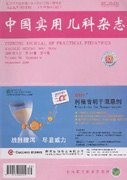|
Assessment of multiple polymerase chain reaction in detecting pathogens of children hospitalized with pneumonia:A preliminary study
WANG Gui-qing,DONG Xiao-yan,ZHONG Hai-qin,et al
2021, 36(8):
617-622.
DOI: 10.19538/j.ek2021080612
Objective To understand the distribution of pathogens in hospitalized children with pneumonia,and to investigate the clinical value of multiple polymerase chain reaction(mPCR). Methods A total of 230 children who were hospitalized for pneumonia in Shanghai Children’s Hospital from September 2019 to June 2020 were prospectively enrolled. Both mPCR and routine microbiological methods were performed in children. Nasopharyngeal and oropharyngeal(NP-OP) specimens were tested with mPCR which could detect 35 kinds of respiratory pathogen at the same time. Sputum specimens were tested with routine microbiological methods(culture and direct immunofluorescence assay) which could detect bacteria,fungus and 8 kinds of respiratory virus. Blood specimens were tested with routine microbiological methods(particle agglutination)which could detect Mycoplasma pneumoniae antibody. Results We enrolled 230 cases,136(59.1%) boys and 94(40.9%) girls,and the median age of the patients was (3.6±3.0) years old. The top 10 pathogens detected by mPCR were Streptococcus pneumoniae(17%),human adenovirus(13.9%),Mycoplasma pneumoniae(13.9%),human rhinovirus(10.0%),cytomegalovirus(10.0%) ,human respiratory syncytial virus(9.6%),human coronavirus(9.6%),human bocavirus(8.3%),human metapneumovirus(7.4%) and Escherichia coli(6.1%). Cytomegalovirus and Escherichia coli were more common among children younger than 3 years of age than among the children at and over 3 years old[(19.8% vs. 0,χ2=25.115,P=0.000),(10.3% vs. 1.8%,χ2=7.422,P=0.006)],while Mycoplasma pneumoniae was less common among children younger than 3 years of age detected by mPCR(5.2% vs. 22.8%,χ2=14.928,P=0.000). The detection rate of one or more pathogens,two or more pathogens,viral pathogens,bacterial and fungus pathogens using mPCR were significantly higer than that using routine microbiological methods[(78.7% vs. 65.2%,χ2=10.353,P=0.001),(49.1% vs. 11.7%,χ2=75.941,P=0.000),(58.7% vs. 8.3%,χ2=131.350,P=0.000),(43.5% vs. 17.4%,χ2=36.964,P=0.000),(3.5% vs. 0.4%,χ2=4.080,P=0.043)];however,the detection rate of Mycoplasm pneumoniae using mPCR was significantly lower than that using routine microbiological methods(13.9% vs. 50.0%,χ2=68.874,P=0.000). The consistency of the same pathogen detection between mPCR and routine microbiological methods was not good(Kappa<0.5,P<0.05). Conclusion The most common pathogens are various viruses and bacteria in hospitalized children with pneumonia in Shanghai Children’s Hospital and nearly half of all cases had two or more pathogens detected. Compared with the routine microbiological method,mPCR is helpful in early identification of pneumonia pathogen in children.
|

